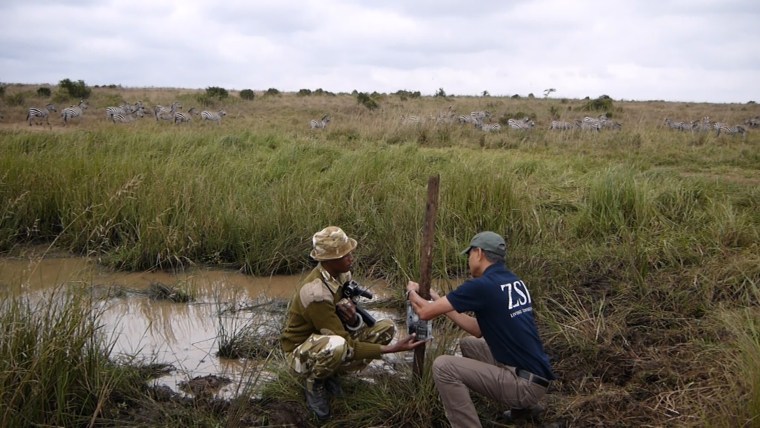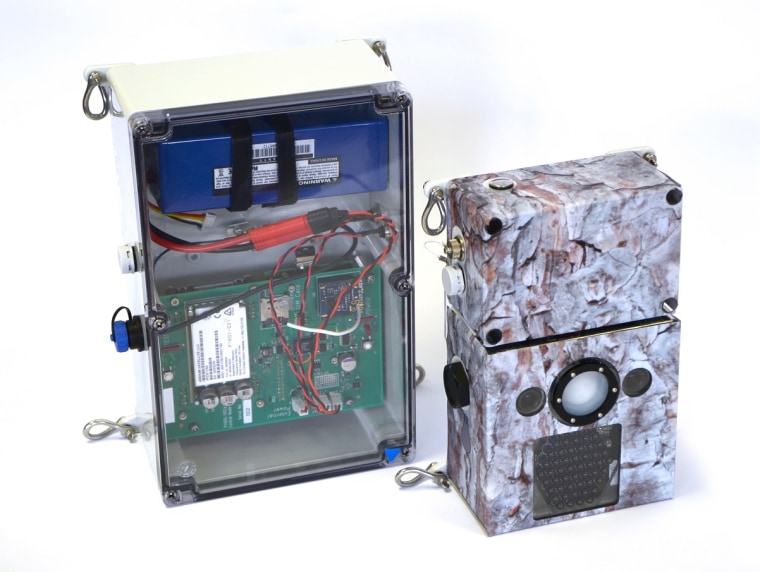
High-tech cameras are being deployed behind bushes and tall grasses in Africa in an effort to curtail the illegal slaughter of rhinos, which are sought for their horns to decorate daggers and treat everything from hangovers to cancer.
The motion of an animal or poacher approaching the camera is enough to trigger a clandestine snapshot, which is then relayed to local game wardens and wildlife enthusiasts around the world via a satellite communications network.
The system recently was deployed in Kenya's Tsavo National Park. In the coming months and years, the technology may spread to other parts of Africa, Indonesia, Sri Lanka, and the Himalaya where poaching is an issue as well as the South Pole where it could be useful to study penguins and other animals.
The near real-time delivery of the pixels "gives the park rangers plenty of time to get out there and intercept whatever is going on," Richard Traherne, head of the wireless division at Cambridge Consultants, a product development and technology firm, in the United Kingdom, told NBC News.
The firm built the system for the Zoological Society of London as part of its Instant Wild project, which delivers near real-time wildlife images to anyone who has downloaded the project's software application. The project received a $780,000 Global Impact Award from Google earlier this year.
The satellite-connected cameras are an improvement over other remote-triggered so-called camera traps that have been in the arsenal of wildlife researchers for years, according to Traherne.

Most traps require a human to physically retrieve the images from the camera, which they may do only sporadically, for example. Other systems — including those already in the Instant Wild project — can relay images via cellular networks, but that limits their useful range.
"The conservative statistic that the mobile phone companies will stand behind is that 10 percent of the globe has mobile phone coverage, while in practice the decent mobile phone coverage is less than 1 percent," Traherne explained.
That means anyone who is involved in animal and habitat conservation is likely to be working in areas with, at best, spotty cell service. "This system will allow the zoological society and other organizations to go to places that just weren't possible before with cellular," he said.

The technology is a welcome addition to the techniques used to thwart illegal wildlife poaching, according to Richard Thomas, a communications coordinator for TRAFFIC, the London-based wildlife trade monitoring network.
"Poachers are getting increasingly sophisticated in their methods, so every available mechanism to prevent them carrying out their activities is worth exploring," he told NBC News in an email.
Another approach funded by Google is the use of camera-equipped drones that wildlife cops can use to assist efforts to spot and track poachers. Other groups view the poaching problem as so out of hand that the only way to save the rhinos is to humanely harvest rhino horn and sell it legally.
None of these efforts alone, noted Thomas, is likely to bring an end to wildlife poaching. "The only silver bullet solution I can envisage is to reduce the end-user demand for protected wildlife projects," he said. "If people aren't buying the goods, the market evaporates and so does the incentive to poach."
For more information on the camera and the Instant Wild project, watch the promotional video below.
John Roach is a contributing writer for NBC News. To learn more about him, visit his website.